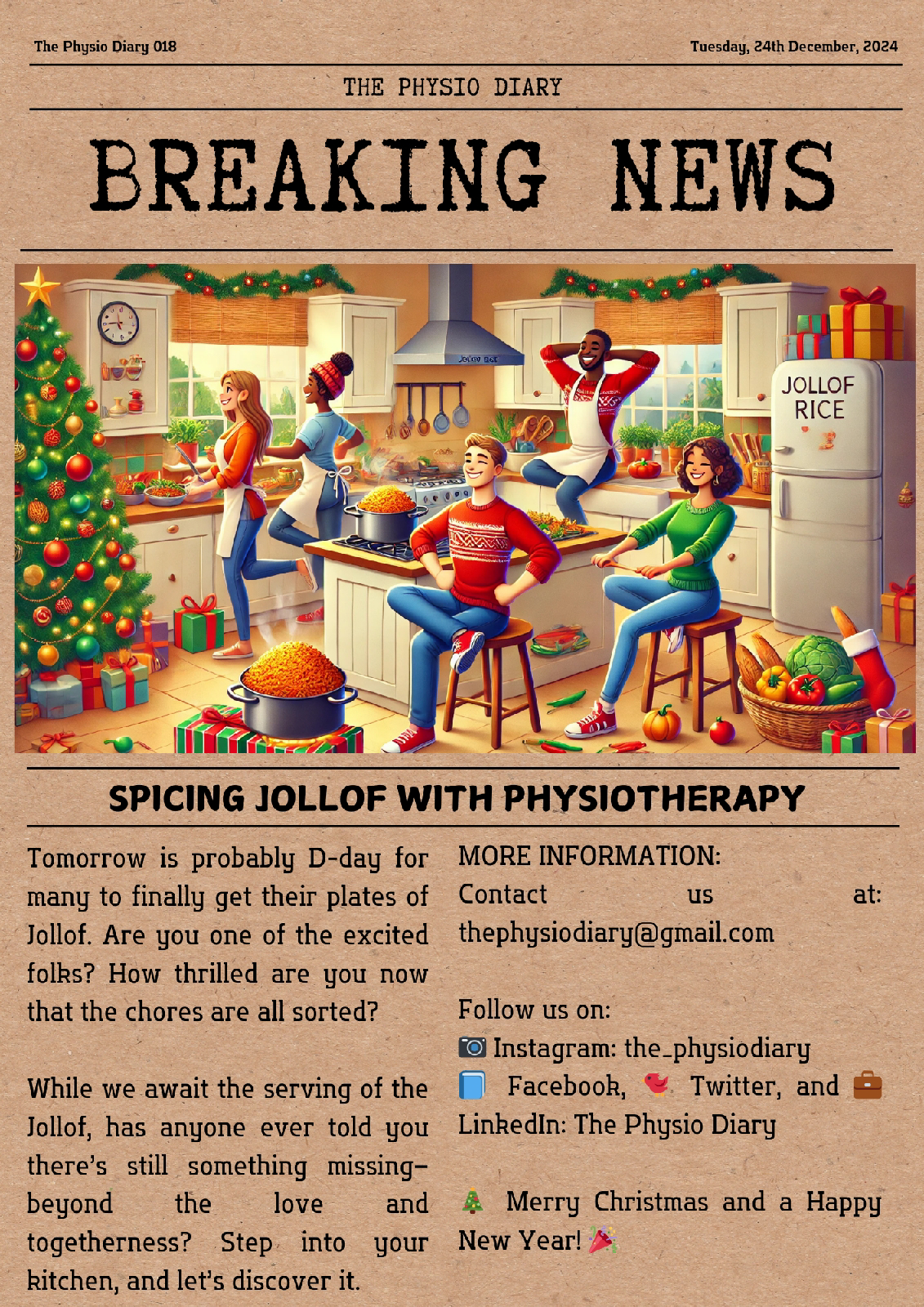Spicing Jollof with Physiotherapy – Avoid Stress and Strain This Christmas
Tomorrow is probably D-day for many to get their plates of Jollof. Are you one of the excited folks? How thrilled are you now that you’ve sorted out the chores? Let us know in the comments section!
But before you savor that delicious Jollof, there’s one last step: the making of the Jollof. Let’s make it healthier and more fun with some physiotherapy tips!
The Best Way to Spice Your Jollof Making
Yes, many people have shared their tips on how to perfect Jollof, from getting the right mix of ingredients to the secret being cooking with love—family gathered together, creating memories.
But has anyone ever told you there’s still something missing? Let’s step into your kitchen to discover it.
Picture this: Mom or Grandma is back in action, assigning tasks to everyone. MJ is in charge of washing the utensils, Susan is busy dicing plantains, Brown handles frying the chicken or turkey, Aunt Jo’ takes care of the salad, Aunt Mercy slices the onions, Mom blends the juice, and Grandma oversees the Jollof pot.
The kitchen comes alive with clattering utensils and cheerful chatter. You hear family stories—maybe even how your parents used to escape their chores, just like you might have tried to. The atmosphere is vibrant and fun.
But what if there was a way to make this experience even better? Let’s look at it through the lens of a physiotherapist.
What Do We Mean?
It’s simple, but let’s take a quick look back at some key insights from our previous posts.
No matter the task in the kitchen, everyone relies on different parts of their body to get the job done: legs (standing for long periods), back (bending over), shoulders, elbows, hands and fingers (dicing, slicing, washing), and neck (bending or tilting while working).
Spending three to four hours performing repetitive movements can put a strain on your joints, especially if your body isn’t used to such activities. The good news is, you can prevent repetitive stress injuries by incorporating simple physiotherapy exercises into your routine. Here’s how:
For Your Legs:
Sit and relax after 20 minutes of standing.
Check this post on how to prevent leg strain during long tasks.
For Your Back:
Avoid bending over. Instead, keep your posture straight or use tools like raised platforms for prep work.
Learn ergonomic tips here.
For Your Neck:
Bend your neck forward, sideways, and backward every 20 minutes to prevent stiffness.
Follow this simple neck exercise guide.
For Your Hands and Fingers:
Rotate your wrists and stretch your fingers after dicing or slicing.
Spicing Jollof with Physiotherapy
This holiday, let your Jollof preparation be more than just cooking—make it a functional, fun, and family-centric physiotherapy session. It’s a way to not only bond but also sneak in some health benefits, ensuring everyone feels great while enjoying the festive spirit.
So, as the rice simmers and the aroma wafts through the air, take a moment to stretch, engage, and enjoy every movement as a celebration of your health and togetherness.
What are your favorite holiday kitchen memories? Have you ever turned a task into an exercise? Let us know in the comments!

Comments
Learnt something today, really! I never thought about how physiotherapy could be woven into cooking. I sometimes dance while cooking long meals - it's my favorite way to stay active. Don't know if this counts too😅.
Definitely practicing some of these tips in my next cooking session, especially the use of raised platforms... my back will thank me😩